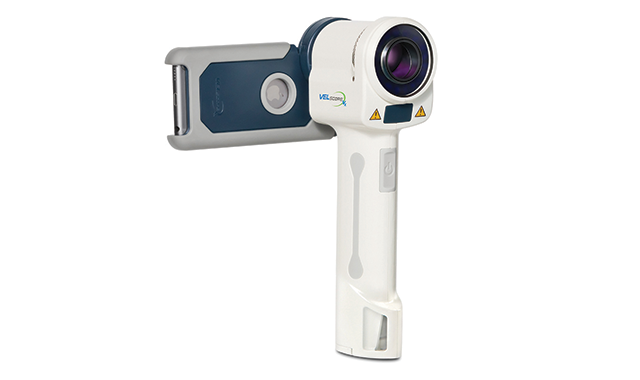Changing the world of oral cancer screening
How VELscope Vx is changing the way doctors think about - and perform - oral cancer screening.

When I set out to create the Best of Class Technology Award, it was because I wanted to recognize excellence in the industry honestly and fairly. That’s why I chose the most knowledgeable, technologically savvy dentists I could find to compose the Best of Class voting panel. Year after year, they find and vote on the most influential and impressive products and technologies in our industry, but it’s not often that they vote on the same one for nearly a decade. LED Dental’s VELscope Vx has won the Best of Class Award eight times - a feat never before reached by any other winner! It’s for that reason that I wanted to shed some light on this company, shortly after the announcement of the 2018 Best of Class winners, and find out what it is that makes their product stand out so sharply from the rest and what their plans are for the future. To do that, I interviewed the CEO of LED Medical Diagnostics, Dr. David Gane.
Does the VELscope take images as it’s scanning the tissue?
Yes, VELscope can image the oral mucosal tissues during the examination using still image capture or video. The VELscope is also a direct visualization device, so the clinician can view the region of interest through the ocular without capturing data. For the camera, we’ve adapted an iPod Touch from Apple and a proprietary app that leverages both the camera and Wi-Fi capabilities of the device, allowing the images to be acquired and easily and securely shared.
Without VELscope, lesion boundaries are often determined using incandescent light and palpation with the surgeon’s judgment and experience. Usually a band of healthy tissue is excised to ensure the lesion is excised in total. Sometimes surgeons use the Mohs technique, a real-time biopsy to ensure the lesion boundaries are cancer-free.
Trending article: The 3 common infections dental professionals should be worried about
What is the adoption rate for VELscope Vx and making oral cancer detection a priority?
Growth of this category of products is slow but steady. There are two types of dentists: the ones who perform oral cancer screenings and the ones who do not. A good number of dentists are focused on comprehensive holistic care, while others are focused more on just the teeth and their supporting structures.

If you look at data from the patients, you’ll see that oral cancer screenings are in high demand. Patients want oral cancer screenings. Many dentists are well versed and skillful in performing comprehensive oral examinations and others are not. The VELscope Vx is appropriately used as an adjunctive device in support of the comprehensive oral examination. A positive finding with the VELscope (usually seen as a dark area representing loss of fluorescence) may require additional information or further diagnostic intervention to reach a definitive diagnosis.
Every dentist should use a VELscope in conjunction with a comprehensive examination. Unfortunately, I don’t believe most are doing what they could be in terms of providing an oral cancer screening service - even though there’s no better service a dentist could provide. There’s also a great opportunity for dentists and their staff to educate their patients on the risk factors for oral cancer.
Many cancers are in decline, but oral cancer isn’t one of them. There’s definitely an educational part that dentists can play.
Continue to page two to read more...
Where do you see the technology going in the future?
I think the technology will become smaller and smarter using more sophisticated images and software algorithms to spatially correct the image for future comparative analysis. They will be Wi-Fi-enabled and easier to incorporate into the delivery of care. The images will be stored locally but also be able to be captured directly to the cloud in real time.
Artificial intelligence will be used to help draw some conclusions to support the clinician and help facilitate the diagnostic process. The images will be communicated to other members of the care team, including the patient’s physician and other dental specialists, to help the general dentist make the decision to either wait and watch, perform a biopsy, or refer the patient to a specialist for care.
More from the author: A composite technology to prevent secondary caries
What else is on the horizon for LED Dental?
We now have an entire portfolio of dental imaging devices and software products, which is very exciting. One of our hottest products in the market currently is our XVWeb, a software-as-a-service product. It’s an image capture-to-cloud, which means it’s used to capture images from most imaging devices in a practice. It will allow the clinician to interact with their patients’ images 24/7 from any web-enabled device. That includes 2D images and 3D images like CT scans and of course VELscope images. XVWeb works with most X-ray sensors, pan, ceph and CT machines, and it also works with most practice management software systems.
LED/Apteryx now has a full portfolio of imaging devices, including digital sensors, intraoral cameras and extraoral imaging devices like panoramic and cone beam computer tomography devices.
Because VELscope is such a strong product, many people think that’s all we do. But we recently acquired Apteryx Inc., a dental imaging software company well known to the profession. This acquisition has greatly strengthened our product portfolio and also our future growth prospects as a company.